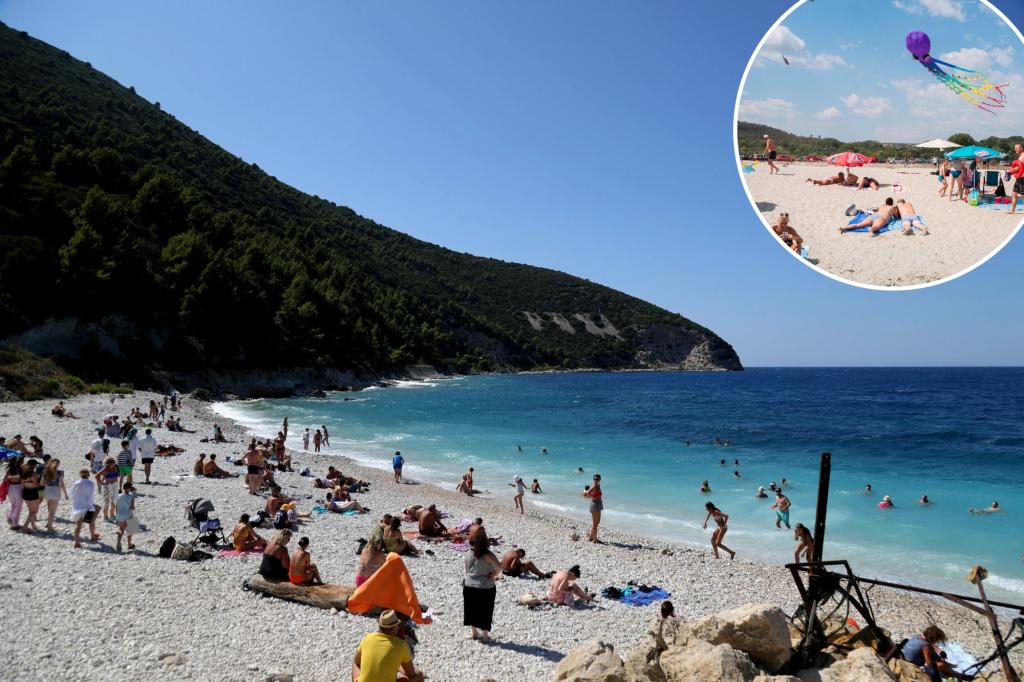The year 2024 witnessed record-breaking travel numbers for Americans, culminating in December 1st being the busiest day ever at US airports. This surge in travel, however, has contributed to the growing issue of overtourism, with popular European destinations struggling to cope with the influx of visitors. In 2023, over 20.2 million US travelers visited Europe, significantly exceeding the 17.3 million recorded in pre-pandemic 2019. This influx, representing a population twice the size of Portugal or Switzerland, raises concerns about the sustainability of tourism in these already popular destinations. Countries like Spain, France, and Italy have begun implementing measures to manage the crowds, including charging for selfies at popular landmarks and considering restrictions on Airbnb rentals. Meanwhile, lesser-known European countries see this tourism boom as an opportunity for growth and are strategizing to attract their share of visitors.
The escalating demand for travel has led to increased prices, potentially driving travelers to explore more affordable, less-visited destinations where inflation hasn’t hit as hard. Travel expert Simon Calder predicts two such destinations, Bulgaria and Albania, are poised to become the next tourist hotspots. He anticipates that 2025 will see travelers broadening their horizons and seeking new experiences. Calder highlighted Bulgaria, a country offering diverse attractions, from Black Sea beach resorts like Albena, Golden Sands, and Sunny Beach to ski destinations like Bansko and Pamporovo. The capital city, Sofia, is steeped in history, showcasing the architectural and cultural influences of various civilizations. Crucially, Bulgaria offers a respite from the overcrowding experienced in neighboring Greece and Turkey. While Bulgaria saw 8.6 million tourist arrivals in 2023, a 13% increase from 2022, it remains significantly less crowded than popular destinations like Spain, which estimated 90 million tourist visits in the same year.
Across the Adriatic Sea lies Albania, another destination Calder predicts will rise in popularity. Known for its affordability, Albania boasts stunning mountain landscapes, beaches often referred to as “The Maldives of Europe,” a vibrant capital city, and picturesque ancient ruins. With its enticing combination of natural beauty, cultural heritage, and budget-friendly prices, Albania is poised to attract a growing number of visitors. In 2023, Albania welcomed 10 million foreign leisure visitors, a figure projected to increase as its appeal gains wider recognition. These emerging destinations offer travelers an opportunity to experience unique cultures and landscapes without the overwhelming crowds of more established tourist spots.
The increasing demand for travel experiences, coupled with rising prices in popular destinations, creates a favorable environment for lesser-known countries like Bulgaria and Albania to attract tourists. Their diverse attractions, including beaches, mountains, historical sites, and vibrant cities, combined with affordability, offer compelling alternatives to the more crowded and expensive European hotspots. As travelers continue to seek new and unique experiences, these emerging destinations are likely to witness a significant surge in tourism. The challenge for these countries will be to manage this growth sustainably, ensuring that the influx of visitors doesn’t compromise the very qualities that make them attractive in the first place.
The key takeaways from this analysis are the continuing rise of global tourism, the strain on popular destinations due to overtourism, and the emergence of alternative, less-visited locations. The travel industry is dynamic, constantly evolving in response to changing traveler preferences and economic conditions. Destinations that can adapt to these changes and offer unique, affordable, and sustainable tourism experiences are likely to thrive in the coming years. The success of Bulgaria and Albania will depend on their ability to balance economic benefits with environmental protection and cultural preservation.
Ultimately, the future of tourism hinges on responsible travel practices, both on the part of travelers and the destinations themselves. Travelers can contribute by choosing less crowded destinations, respecting local cultures and environments, and supporting sustainable tourism initiatives. Destinations, in turn, need to invest in infrastructure, manage visitor numbers effectively, and prioritize environmental and cultural preservation. By working together, travelers and destinations can ensure that the benefits of tourism are shared equitably and that the beauty and cultural richness of these places are preserved for future generations.


